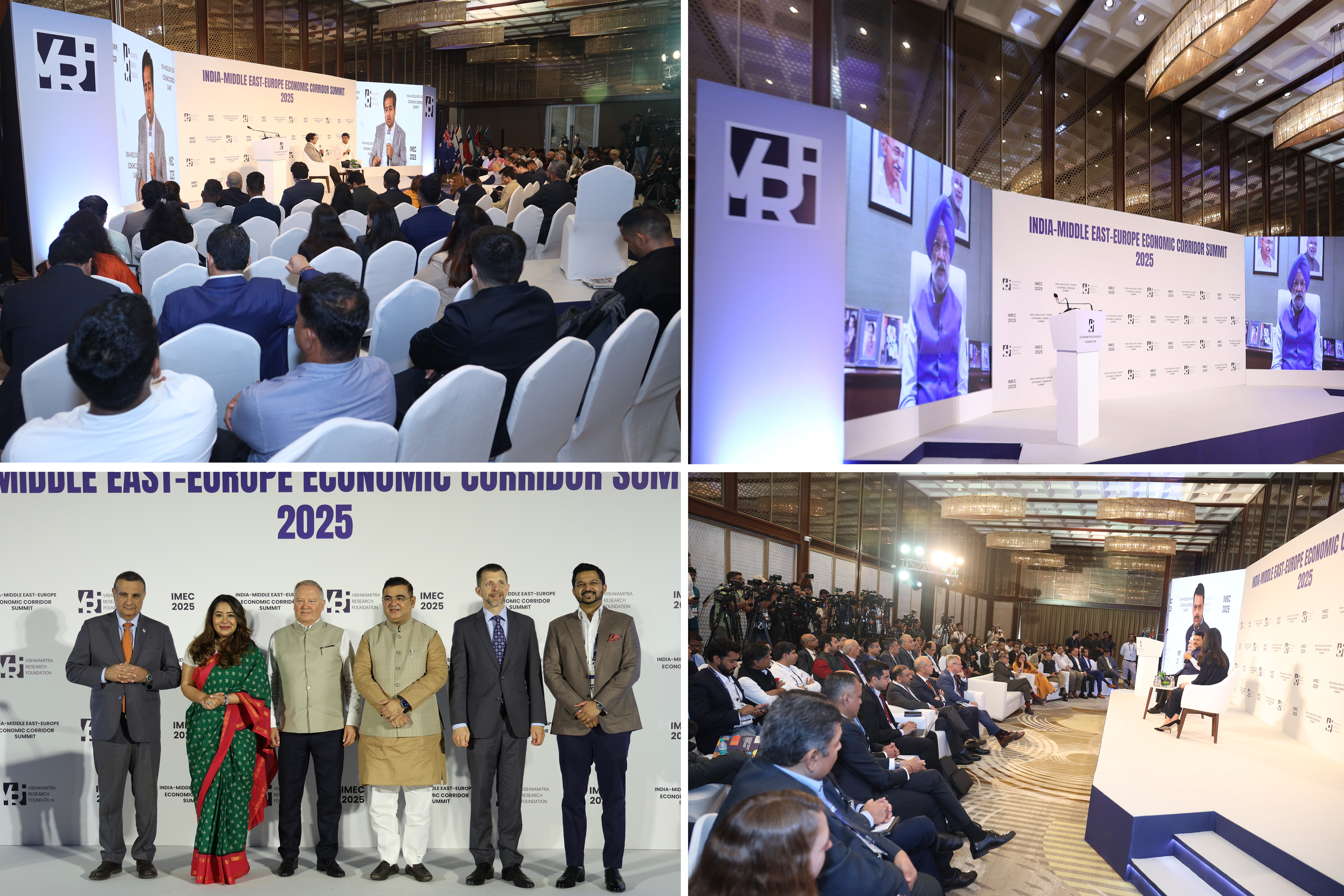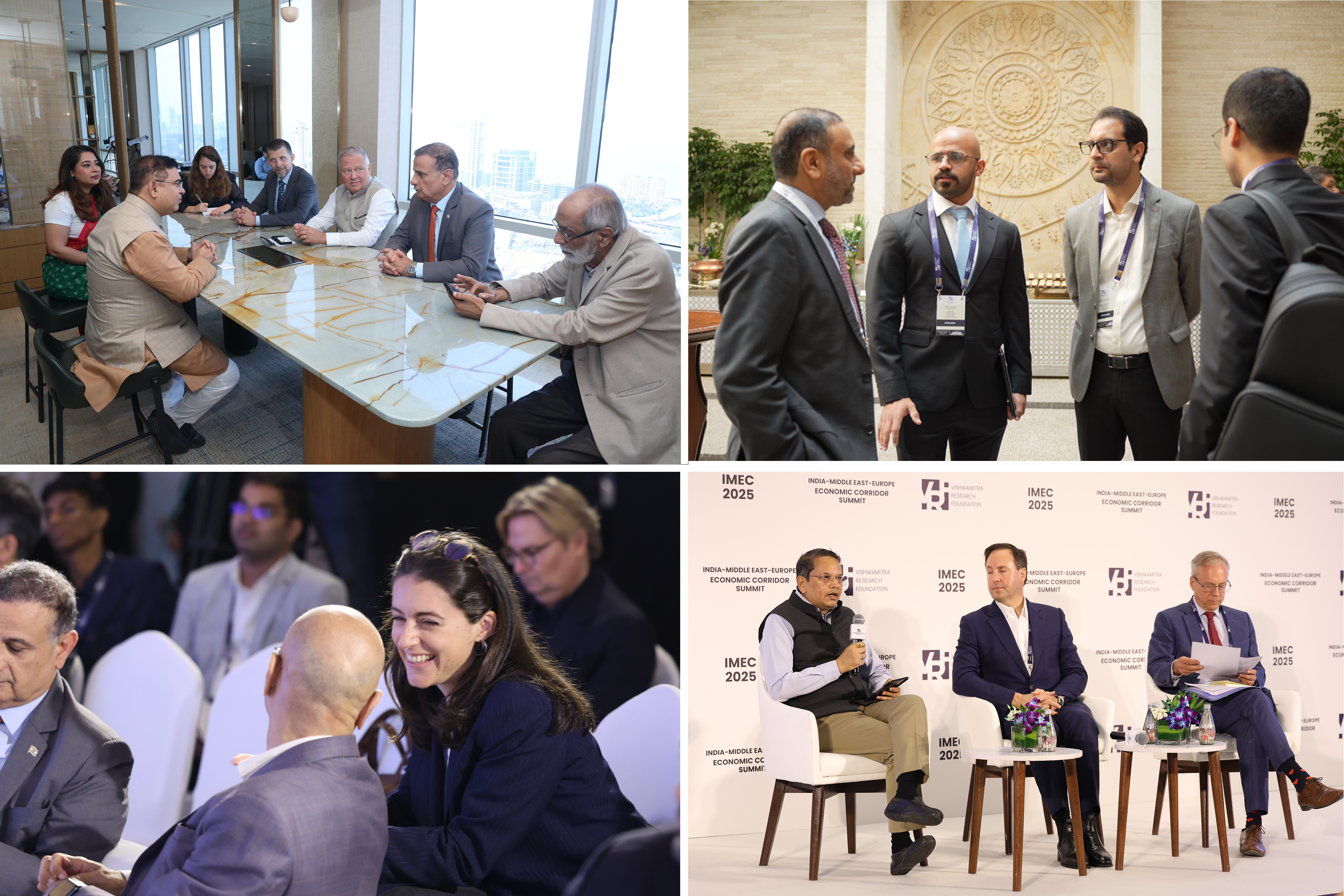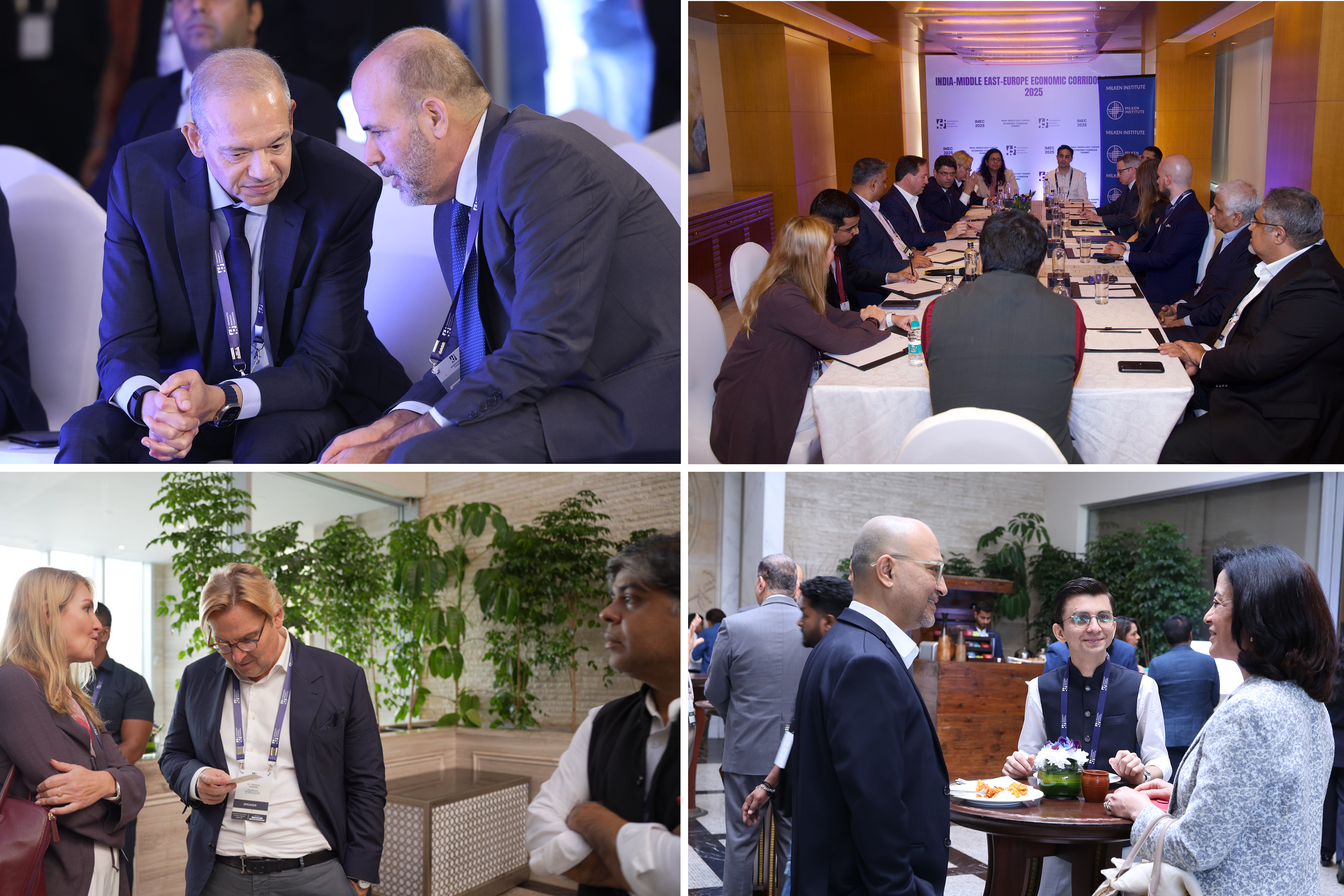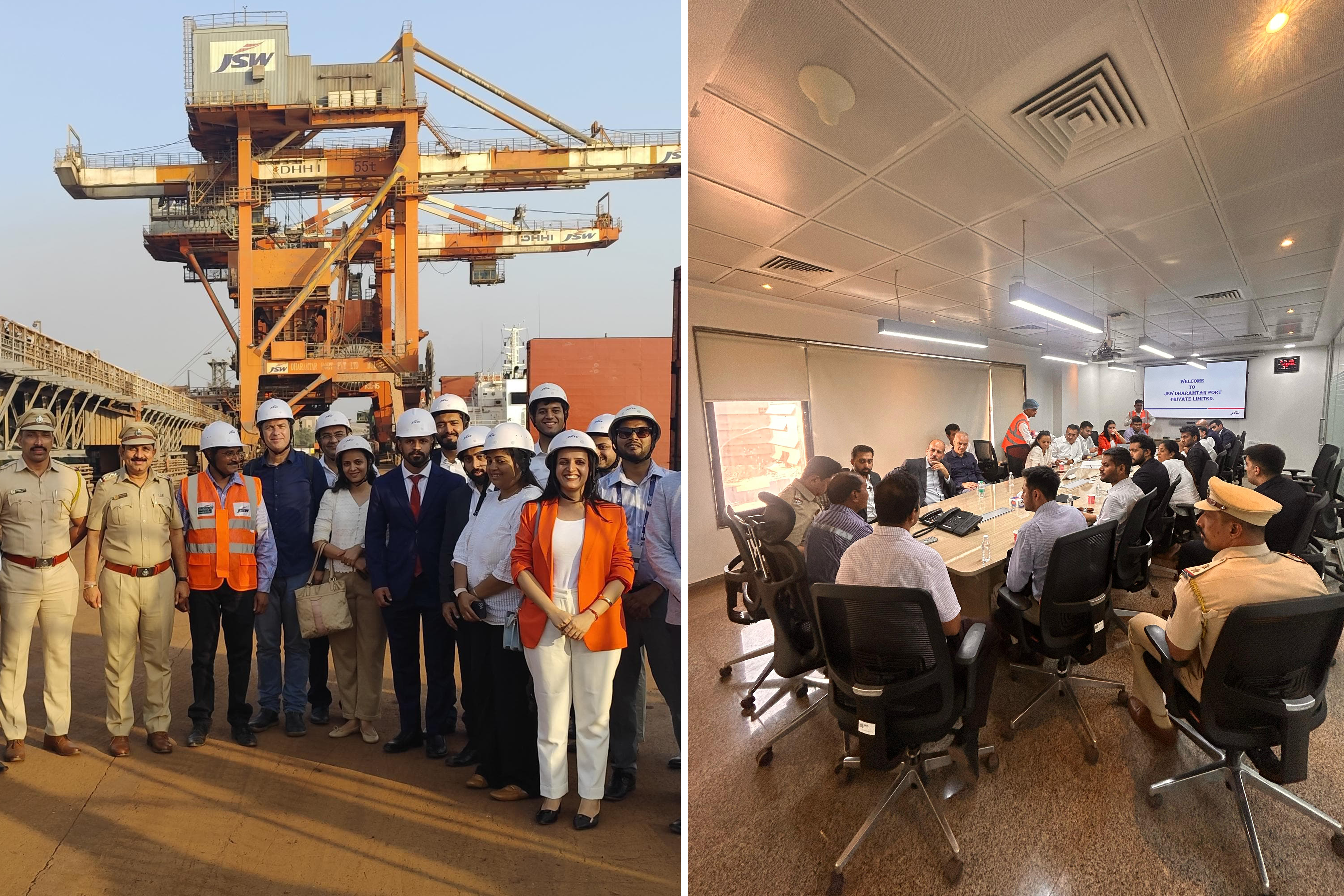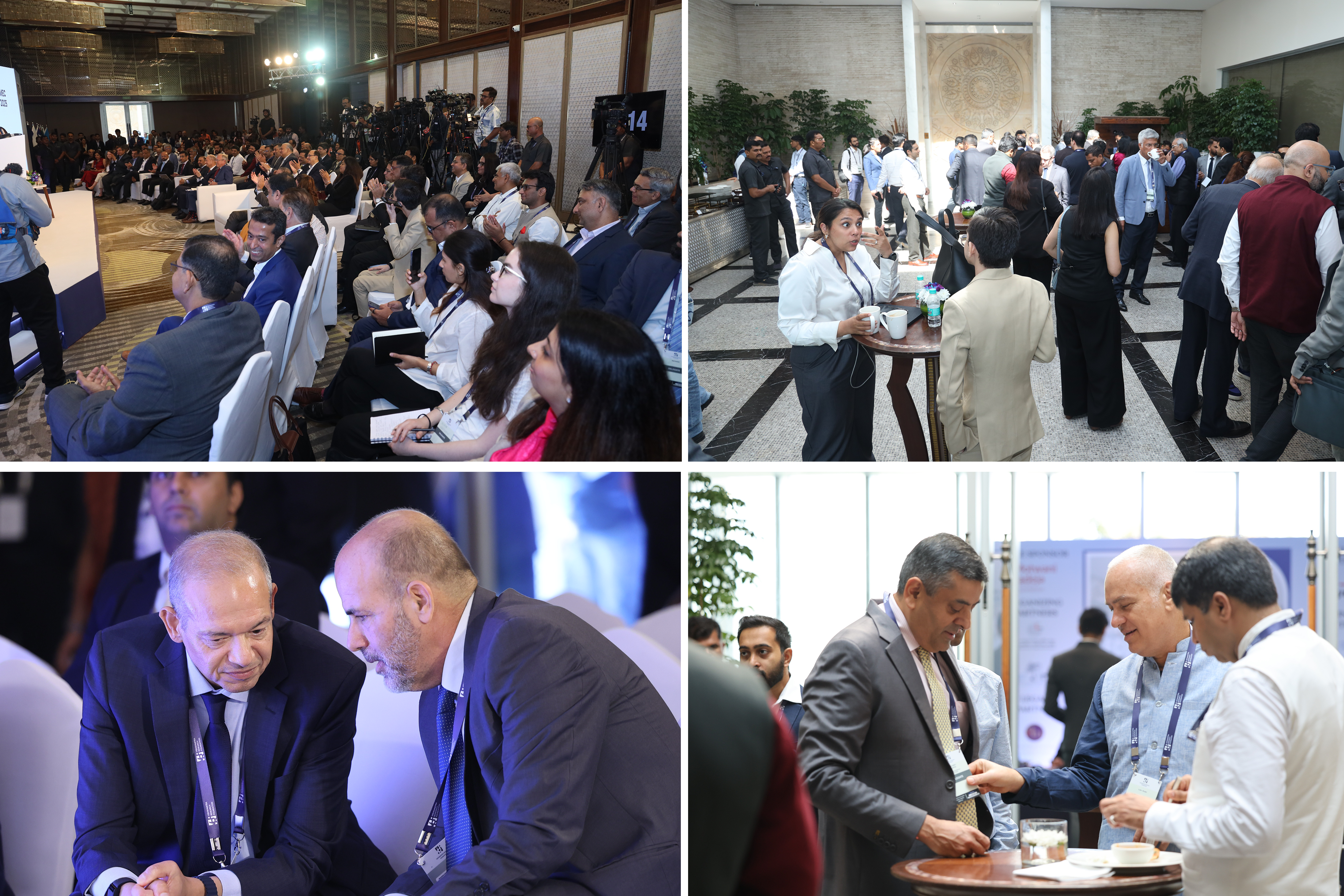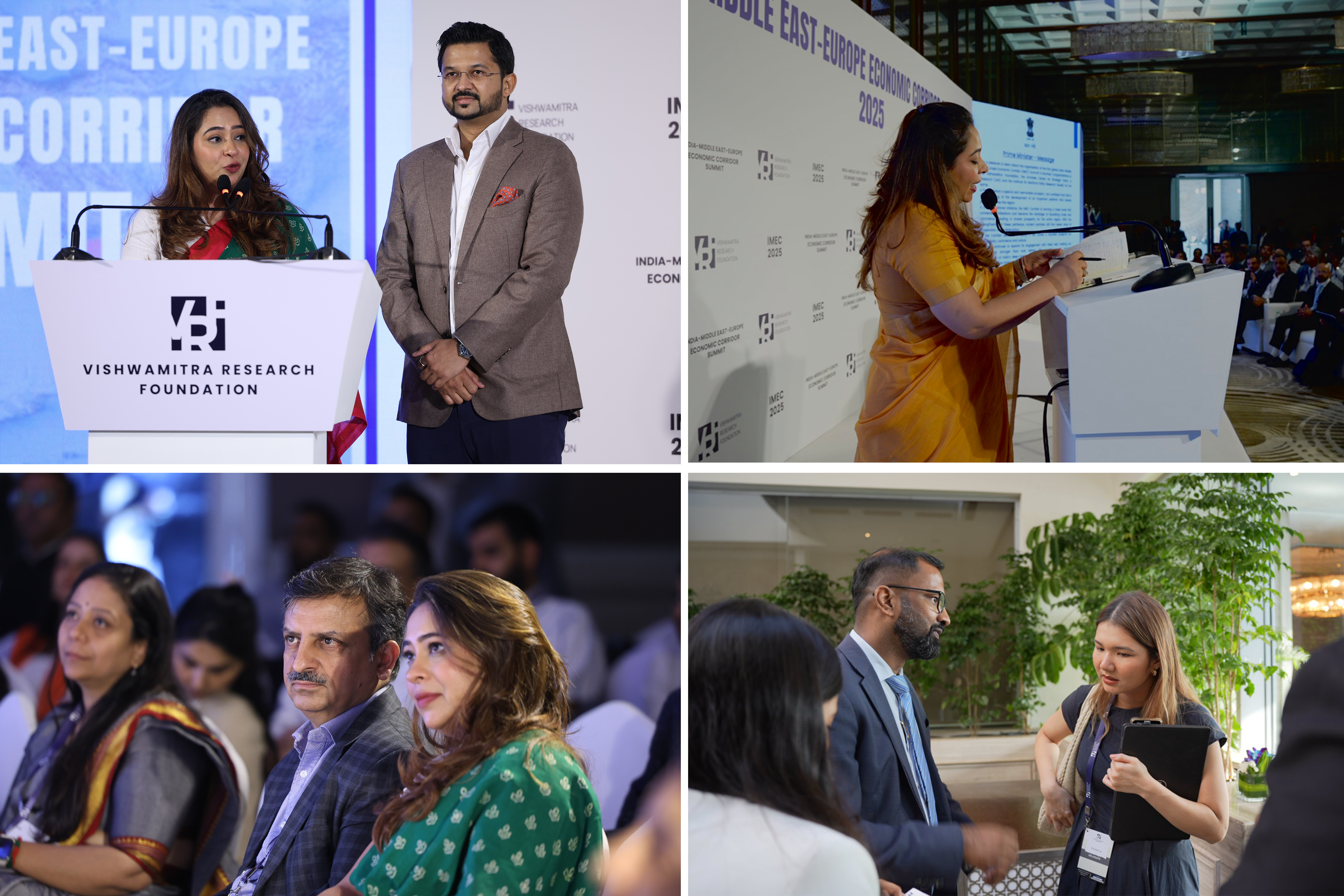IMEC SUMMIT, 2025
After the signing of the MoU on India-Middle East-Europe Economic Corridor on the sidelines of the G20 Summit hosted in India, there has been little progress on the
project due to various reasons. There has also been a coordination issue between all
the signatory countries over the last few years. However, each time there is a state
visit by a leader to another signatory country, there is almost always a mention of
IMEC, signifying its geoeconomic importance. More recently, during PM Modi’s visit to
Washington DC to meet with President Trump, President Trump underscored the US’
dedication to IMEC. President Macron as well as PM Modi also reiterated the need to
collaborate on the IMEC during the latter’s visit to France last month. UAE and India
have already begun intense bilateral activity on the virtual corridor – MAITRI: Master
Application for International Trade and Regulatory Interface – to eventually integrate it
throughout IMEC.
Here are a few snippets which underscore the gravity on collective economies of India
and the countries along the Corridor:
- Estimates indicate that by utilising IMEC, India’s GDP could rise by approximately 11.9 billion USD by 2030, while exports could increase by around 4 billion USD due to enhanced and dependable trade. These projections are conservative, focusing on potential risks. However, there may be situations where GDP growth is even greater, particularly if tariff rates are lowered bilaterally for countries within the IMEC corridor
- Projected gains in signatory countries whose combined current GDP is 47 trillion $ - a snapshot - USA (3.9 Billion $), India (3.2 Billion $) the EU (almost 2 billion $), UAE (1.5 billion $) and Saudi Arabia (0.34 billion $).
- After the adoption of the Middle East economic corridor, India is projected to reduce shipping times to Europe by nearly 6.4 days - thus taking only 10 days to reach European mainland - which in turn will reduce the tariffs on the goods making them cheaper for consumption
- Shift in Trade Patterns: If goods are rerouted through IMEC, countries along the new route will enable new accessible markets develop. Enhanced connectivity might result in investment in SEZs, local industries, making domestic products more competitive compared to imports.
- Supply Chain Resilience: Countries may opt to diversify their supply sources, potentially reducing imports from specific countries while increasing them from others - thus making the existing chains more resilient and insulated from global shocks.
- New markets will develop for consumption of goods along the corridor, since the corridor will be able to lower costs - new manufacturing hubs may also begin to mushrooms in several countries along the corridor.
- High-speed rail - which is an integral mode of transport across the Corridor will lower logistical costs, save time and complement the traditional maritime routes.
As a first global effort, VRF Bharat with The Emirates Center for Strategic Studies and Research – UAE, Institute for Maritime Policy and Strategy – Israel; industry partners – Federation of European Business and Industry, Dubai Chambers and Indian Merchants Chamber and Motwani Jadeja Foundation are hosting the IMEC Summit in Mumbai on 28th & 29th of April, which will include think-tanks, business delegations and diplomats from all signatory countries of the IMEC. We have discussed with partner organisations across signatory countries of this becoming a rotational exercise with each signatory country hosting the Summit at certain predecided intervals – to set shorter goals, set up a secretariat, financing options and other such long-standing issues – until the Corridor becomes a reality.
Much discussion on Energy, Logistics, Critical Technologies, Financing, Public-Private Partnership Models & Maritime cooperation is required between credible institutions of all signatory countries to arrive at a common consensus. In an effort to do so, this is the first such global effort.

